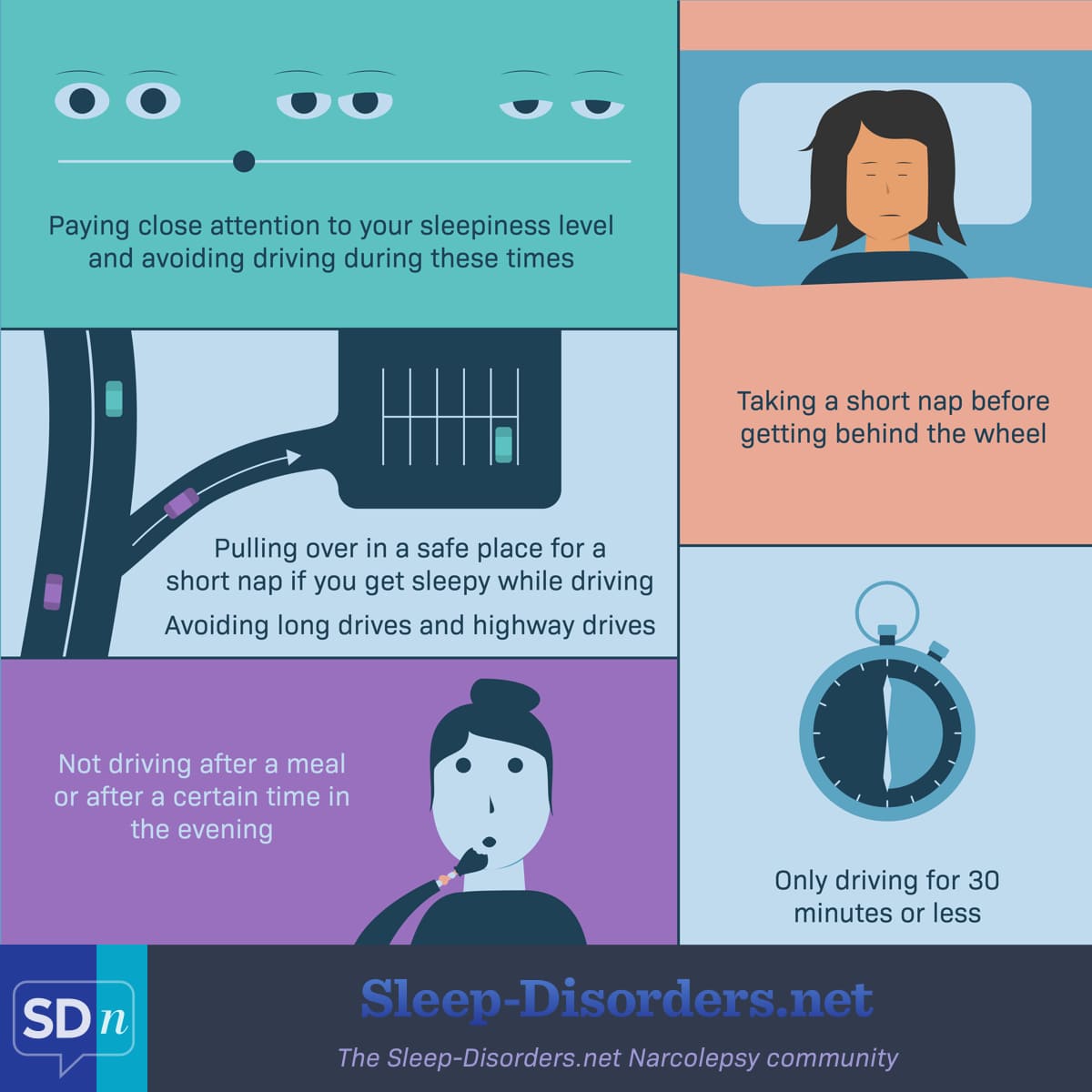Driving While Sleep Deprived: How to Stay Safe
Reviewed by: HU Medical Review Board | Last reviewed: June 2020 | Last updated: May 2023
Driving while sleep-deprived can be as dangerous as drunk driving, driving too fast, or driving during bad weather. That’s right – if insomnia or restless legs keep you up night after night, or sleep apnea makes you feel tired and sleepy all the time, you could be dangerous behind the wheel. People with narcolepsy have even more to worry about when it comes to driving.
In fact, driving with a sleep disorder can make you as dangerous as a drunk driver.1
According to the National Highway Traffic Safety Administration, in a single year:2
- 91,000 crashes reported by police involved sleep-deprived driving
- 50,000 people were injured in these crashes
- 800 people were killed in these crashes
Ways to stay safe
A few commonsense steps can keep you, your passengers, and your fellow drivers safe when you are driving, such as:3
- Listen to others. Studies show that people often underestimate how tired they are or how bad their driving may be. So, if a passenger or someone following in another car says you drifted out of a lane or nodded off, listen. Then follow some of the tips below.
- Pay attention to the signals that you are too tired to drive. Signs include trouble focusing, heavy eyelids, yawning, bobbing of your head, drifting from your lane, and trouble remembering the last stretch of road you just drove.
- Pull over and nap. If you realize you are too tired, find a safe spot to pull off the road and take a 20-minute nap.
- Switch drivers. True, this option only works if you have another person in the car who can drive. Be willing to admit you are too tired to drive and ask for a break.
- Drink some caffeine. Caffeine is a stimulant that can help you fight drowsiness. Caffeine can be found in coffee, tea, soda, and energy drinks.
- Take frequent breaks. One study found driving problems increased the longer someone drove, especially after 1 hour. Taking frequent breaks to get out and walk around the car can help keep you alert.
- Plan ahead. Schedule any long, highway drives for the time of the day when you know you are most alert.
- Pay attention to the medicines you take. Many drugs can make you drowsy, including cold and allergy medicines, and sleeping pills. If you take any drugs that leave you feeling tired, sleepy, or groggy, put off driving until your head clears.
Driving with narcolepsy
People with narcolepsy often have to take extra precautions when driving. Several studies have found that more than half of people with narcolepsy have fallen asleep while driving, and over 1 in 3 have had an accident. Tips for people with narcolepsy to reduce falling asleep while driving include:4
- Paying close attention to your sleepiness level and avoiding driving during these times
- Pulling over in a safe place for a short nap if you get sleepy while driving
- Taking a short nap before getting behind the wheel
- Avoiding long drives and highway drives
- Not driving after a meal or after a certain time in the evening
- Only driving for 30 minutes or less
Figure 1. Safe driving tips
Your doctor may be able to prescribe a drug that you take before driving that will help you stay awake.
In most parts of the United States, driving is a necessary part of daily life. If you are having problems with sleep, you owe it to yourself and others to seek treatment so you do not have to drive while sleepy. Getting enough good quality sleep is as important to health as exercise, a healthy diet, and maintaining the brakes on your car.
